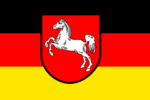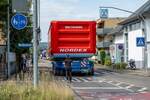News Release from WindEurope
Wind Industry Profile of
Wind-based electrification will drive Europe to net zero
ETIPWind (the European Technology and Innovation Platform on Wind) and WindEurope have published a new report that shows that deep decarbonisation of the economy is possible and affordable. A future net-zero system will cost no more as a share of GDP than our energy system costs today: 10.6% of GDP. And in broader societal terms it’ll be significantly cheaper when factoring in the costs of externalities such as air pollution, water consumption and land use – plus the economic impacts of climate change.
Adrian Timbus, ETIPWind Chairman, said: “Wind energy can help electrify 75% of Europe’s energy demand and thereby deliver climate neutrality by 2050. But we must prioritise the development of the necessary technologies: next generation onshore and offshore turbines, electrification solutions for transport and for industry, and electrolysers for renewable hydrogen.”
Electrification – the most cost-effective way to decarbonise Europe
Direct electrification, complemented with the indirect electrification of harder-to-abate sectors, is the most cost-effective and energy efficient way to cut energy sector emissions to net-zero by 2050. In 2050 electricity will meet about 75% of final energy demand. Direct electrification will account for 57% and indirect electrification through hydrogen and its derivatives for another 18%. That’s compared to today’s electrification rate of 25%.
Most sectors of the economy can electrify their power and heating needs with established and commercially available technologies. Industry could directly electrify 76% of heat and power. For higher rates of electrification, new technologies such as e-crackers will be needed. Some industries, including textiles, non-ferrous metals, ceramics, glass, food, paper and pulp, will even reach 100% electrification. Other industrial sectors such as cement, chemicals, steel, and refineries are harder to electrify. They will need a combination of direct electrification and the substitution of fossil fuel feedstocks with renewable hydrogen and its derivatives.
Direct electrification will be the preferred decarbonisation solution for individual road transport, short distance shipping and rail. It will also play a role in commercial road transport. The report estimates that electric vehicles will make up 50% of the passenger vehicle fleet in the late 2020s and 50% of the commercial vehicle fleet by 2031. Heat pumps will be the key driver in electrifying the building sector.
But Europe will struggle to make the necessary progress in electrifying mobility and heating without the right regulatory frameworks and incentives. Europe also needs to build charging infrastructure and refuelling stations for EVs and fuel cell trucks. Combining charging infrastructure and wind energy deployment will potentially lead to significant savings on grid investments and congestion management. The report also calls for sectoral CO2-reduction targets, an effective carbon pricing mechanism for mobility and heating and a ban on internal combustion engine sales by 2040.
Giles Dickson, WindEurope CEO, said: “The EU must ruthlessly prioritise future-proof technologies if it wants to be climate-neutral by 2050. We’ve less than 30 years to build a net-zero energy system. The technologies for direct electrification and renewable hydrogen production are here. Now we need the right regulations to scale them up. The EU ETS, Energy Taxation Directive and State Aid Guidelines can unlock significant investments with the right tweaks in the Fit-for-55 package. We’ve got to sort out the permitting. Contracts-for-Difference and technology-specific auctions will also play a crucial role. And energy consumers need to be able to combine them with corporate PPAs. Industrial consumers are knocking at our door, wanting to decarbonise with wind. Let’s make it a demand-driven energy transition.”
Wind energy – enabling Europe’s energy transition to net-zero
Today wind energy is among the cheapest forms of electricity production in Europe. And further cost reductions and improvements in turbine technology will make it even cheaper. The report expects onshore wind to have average costs of €33/MWh by 2030. That’s a cost reduction of 28% compared to today. Offshore wind costs will fall by 44% to €48/MWh and floating offshore wind costs by 65% to €64/MWh over the same period. The report expects bottom-fixed and floating offshore wind costs to converge by 2040 at between €30/MWh and €50/MWh.
The European Commission’s scenarios see wind energy becoming Europe’s biggest source of electricity after 2025 and accounting for 50% of Europe’s electricity production by 2050 (up from 16% today). And they see growing rates of electrification driving electricity production from 2,760 TWh today to 6,800 TWh by 2050.
This all implies a huge expansion in wind energy. The Commission envisages 1000 GW onshore wind by 2050 (up from 165 GW today) 300 GW offshore wind (up from 15 GW today). It sees onshore wind generating 2,300 TWh a year by 2050 and offshore wind 1,200 TWh.
Bo Svoldgaard, Senior Vice President Innovation & Concepts at Vestas, said: “Wind energy will be at the core of the future energy system. It is already the most cost-effective power generation source. With further technology improvements and better permitting procedures wind energy will become the number 1 source of electricity soon after 2025.”
Research and innovation are vital to delivering these cost reductions. The European Union must continue to invest in wind energy research to unlock the five megatrends in wind energy technology: the scaling up of offshore wind; the industrialisation of floating offshore wind; further improvements in the co-existence of wind and the natural environment and other societal interests; the repowering of existing onshore and offshore wind farms; and achieving the full circularity of wind turbines.
Elisabeth Brinton, Executive Vice President of Shell Renewables & Energy Solutions, said: “This report highlights the critical role offshore wind will play in helping the EU reach its 2050 climate neutrality targets. Getting there will mean policy and technological solutions that shape the energy system as a whole, building stronger links across multiple energy carriers, infrastructures and consumption sectors.”
The power grid – the backbone of the energy system
The power grid will be the backbone of an energy system dominated by renewables. By 2050 renewable energies will be 81% of electricity. The report shows that a net-zero energy system, largely running on renewable electricity, can remain reliable and resilient. But Europe’s electricity grid needs to be expanded and reinforced – onshore and offshore – as well as optimised.
Europe currently invests €40bn a year on power grids. Annual investments across all voltage levels need to double over the next thirty years to €66-80bn a year. Transmission infrastructure projects are regularly delayed today. Permitting and approval of transmission infrastructure projects must be streamlined, applying among others a sea-basin approach to offshore wind grid planning.
Rasmus Errboe, Senior Vice President, Head of Continental Europe Offshore at Ørsted, said: “Europe needs an energy infrastructure masterplan that can deliver on its decarbonisation ambitions in less than three decades time. We need to double investments in on- and offshore electricity grids and accommodate the build-out of renewable hydrogen. And offshore hybrid power plants will be key to unlocking wind’s full potential.”
A net-zero system needs to provide more flexibility to integrate large shares of renewables. By 2050 wind and solar will be 70% of the EU’s electricity mix. A diverse portfolio of flexibility resources and enabling technologies will ensure that Europe can reliably balance the daily and seasonal variations in renewable generation. Flexibility will be provided by interconnectors, heat pumps, renewable hydrogen, pump storage, battery storage (stationary, vehicle-to-grid), demand-response and dispatchable renewable generation assets.
- Source:
- WindEurope
- Author:
- Press Office
- Link:
- windeurope.org/...
- Keywords:
- WindEurope, ETIPWind, report, electrfication, process, wind, Europe, reduction, net zero, energy system, electrolyser, hydrogen



























